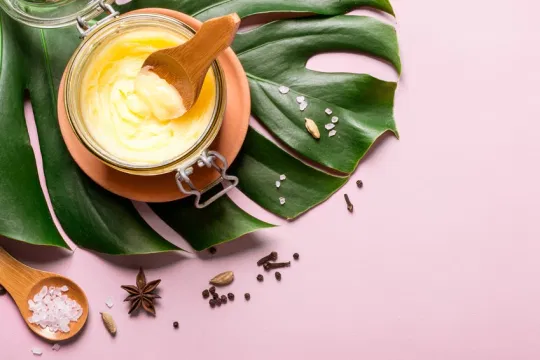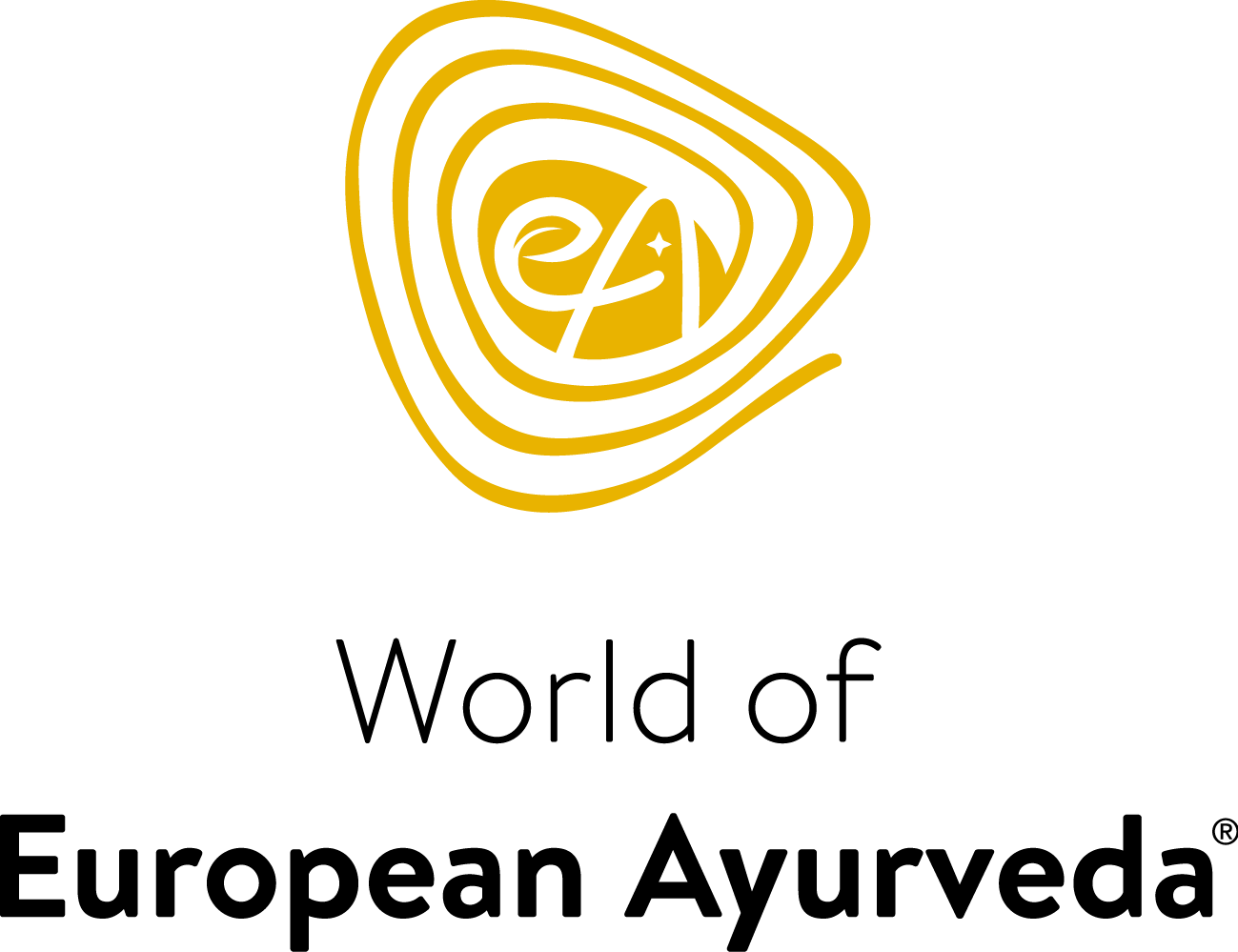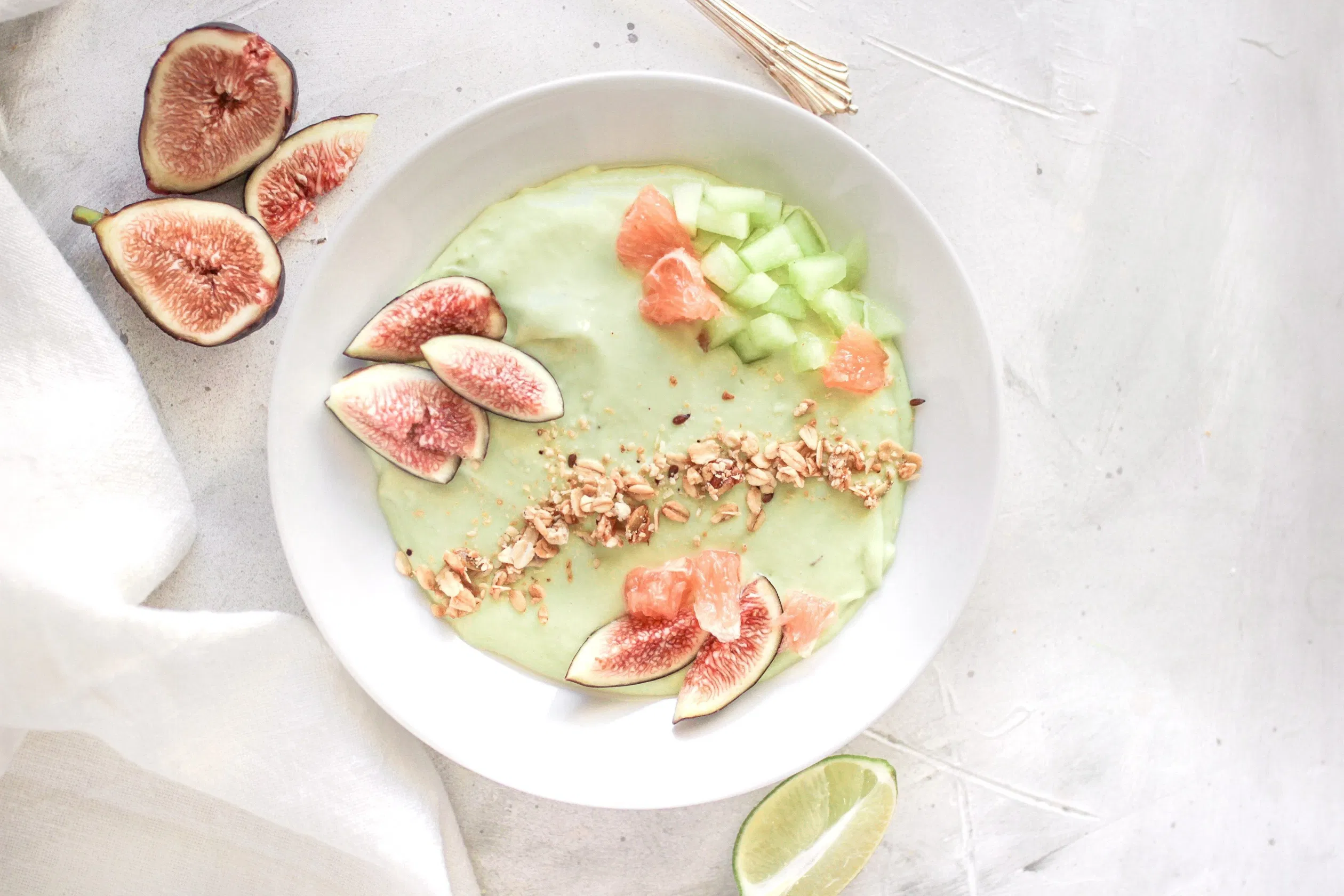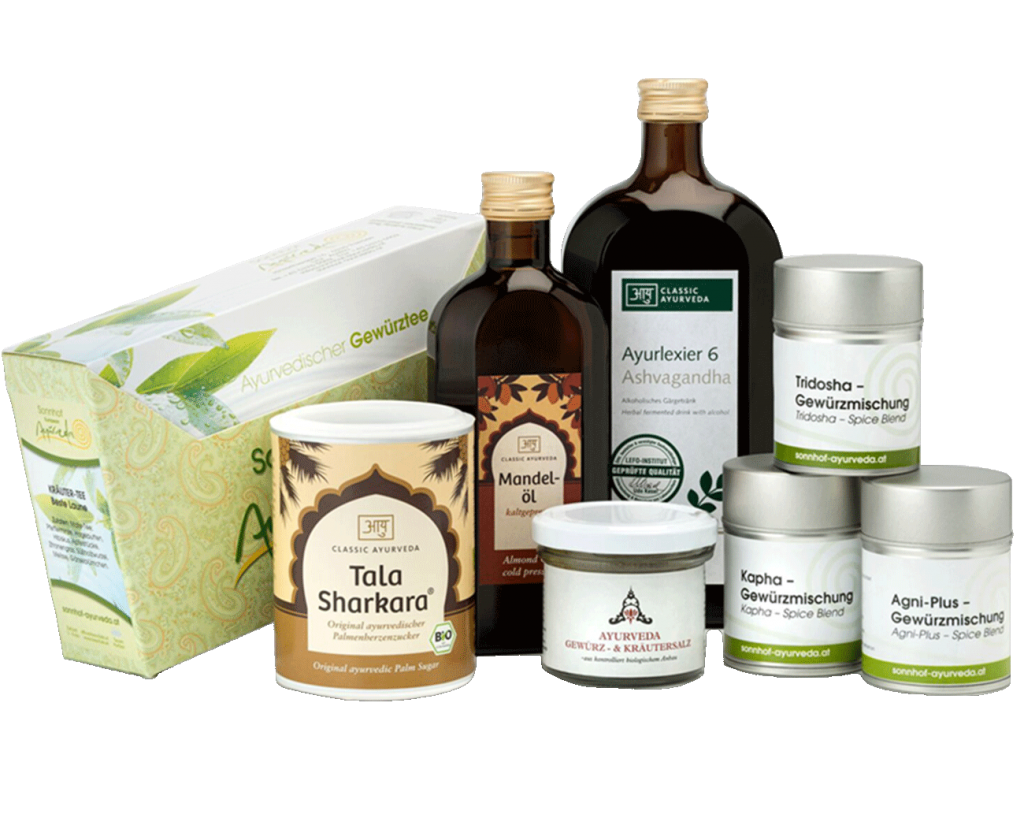The vegan diet does without any animal foods at all. But does this also work in Ayurveda, where ghee and honey play such a big role? And is the plant-based diet healthy or does it have too many disadvantages? Find out here whether vegans really have the healthiest diet and much more.
What is vegan nutrition actually?
Those who follow a vegan diet completely renounce animal products. Many vegans justify this decision by saying that they do not want to be responsible for animals suffering. This train of thought is also taken up in Ayurveda, namely in the ahimsa principle. Ahimsa means nothing other than non-violence.
At first glance, Ayurveda and veganism seem to go very well together. After all, the Ayurvedic diet provides for largely avoiding animal foods anyway, as meat, fish and dairy products are more difficult to digest. And finally, the Ayurvedic teachings know: Man is what he can digest!
However, certain animal products play an even more important role in the Ayurvedic way of life: Honey, yoghurt and ghee are components of many Ayurvedic recipes and body treatments. So is it impossible to live and eat Ayurvedically and vegan at the same time? No, quite the opposite!
Vegan Ayurveda recipes and tips for beginners
If you want to eat a vegan diet and still not do without the beneficial effects of an Ayurvedic menu, you need one thing above all: a willingness to experiment! Because a balanced and healthy vegan diet thrives on variety in the choice of food.
The best products for a vegan diet
The favourite of many vegans? Clearly pulses, nuts and seeds, because they provide the body with important nutrients and are wonderfully filling. It's best to vary between different types: lentils, beans, almonds, linseed - just find out what you like best.
Pseudo-cereals such as amaranth and quinoa are just as valuable for vegan Ayurvedic cooking. For example, you can prepare both a sweet breakfast and a savoury meal from these two varieties. Whole grains such as bulgur, spelt rice or couscous are particularly suitable for savoury dishes.
High-quality fats also belong in every well-stocked Ayurvedic kitchen, because with a small amount of fat, fat-soluble vitamins, for example, can be better absorbed from your food. It is best to choose coconut, walnut, sesame, pumpkin seed or linseed oil.
However, and this is also very important, not all vegan foods are equally suitable for every constitutional type. Ayurveda does not have a vegan diet for all three doshas. As an example, here are a few recommendations on which foods suit which dosha:
- Vata: sweet fruit, almonds, carrots, root vegetables, potatoes, sesame oil
- Pitta: rice milk, bitter substances in herbal teas and green vegetables, dried fruit, pulses.
- Kapha: hot spices, cabbage, mung beans, barley
If you are not sure how to design your Ayurvedic menu as a vegan, it is best to try out different products. You will quickly intuit what gives your body the most energy and your mind the most satisfaction.

Recipes: How can I eat a vegan diet?
The good thing about vegan Ayurvedic cooking is that you will certainly never get bored, if only because of the many spices and different types of fruit and vegetables that form the basis of your menu. Here are just a few examples of delicious and easily digestible vegan meals!
Vegan breakfast: cereal porridge
You can refine the cereal porridge in many different ways.
As a basis, you only need 4 tablespoons of cereal flakes of your choice or alternatively quinoa that you have soaked overnight. Green spelt also works wonderfully.
Boil your porridge base in a little water until it has the desired consistency. Whether it's more liquid or solid - everyone has their own preferences! You can also sweeten the porridge with maple syrup or agave syrup.
Warm fruits go very well with this. Apple pieces, for example, can be braised with cinnamon and a vanilla pod for a breakfast that suits every season. Especially on cold autumn and winter days, it makes for a perfect start to the day.
Vegan main course, variant 1: Mung Dal stew
Mung Dal is another classic for Ayurvedic dishes.
Just know that you should soak the pulses for at least 4-5 hours for the following dish.
You need about 3 tablespoons of it in this case, plus these ingredients:
[su_note note_color="#F3B400″ text_color="#ffffff"]
- Half a diced carrot
- 1 handful soup vegetables
- 1 courgette cut into small pieces
- 1 small, chopped ginger slice
- ½ tsp each cumin seeds, coriander and turmeric
- Salt
- 1 pinch of asafoetida (also called asafetida)
- 200 ml coconut milk (or only half if you are a Kapha type)
- 200 ml water (or 300 ml, see above)
- 2 tbsp oil of your choice
- Juice of a lime (to taste)
[/su_note]
Briefly fry all the spices except the salt in the oil. The cumin seeds will burst open. Then add the ginger and the vegetable cubes, followed by the liquids and the mung dal. Let the mixture simmer on low heat for about 25 minutes or until the dal is soft. Salt it, drizzle the lime juice over it - done!
Vegan main course, variant 2: Vegetable soup
As with the morning cereal porridge, you have almost unlimited possibilities when it comes to preparing soups. We suggest the following combination:
[su_note note_color="#F3B400″ text_color="#ffffff"]
- A handful of vegetables of your choice, e.g. carrot, courgette, sweet potato or tomato
- 1 large slice ginger
- 1 small onion, diced
- Spices of your choice, e.g. cardamom, coriander, nutmeg, star anise, salt, pepper
- 1 tbsp sesame or coconut oil
- 500 ml water
[/su_note]
Sauté the onions and chopped ginger in the oil and then add the vegetables. Let the mixture brown slightly and then deglaze with water. Let the soup simmer for about 15 minutes and puree it. You can then season it to taste and enjoy.
Ghee: Is Ayurvedic butter vegan?
You may have wondered where the ghee is hidden in these recipes. After all, it is an integral part of so many Ayurvedic recipes. The reason you won't find ghee in recipes without animal products is simply because ghee is not vegan.

It is a fat that is extracted from pasture butter. For classic Ayurvedic butter with its golden yellow colour, an animal base is necessary. However, vegan ghee is already available in health food stores, and you can even make a variation of it yourself at home. For the homemade vegan ghee you need:
- 150 ml rapeseed oil
- 50 g coconut fat (or coconut oil if you want to taste the coconut flavour)
- 2 tbsp unsweetened vegetable milk substitute
- 1 pinch each of salt and turmeric
The turmeric gives the ghee its classic yellow colour, but you can of course leave it out.
To make the ghee, simply melt the coconut oil and stir in all the other ingredients. Now put the container in the fridge for an hour and then stir the mixture again well before transferring the ghee into a boiled container and keeping it refrigerated.
Is a vegan diet good for your health?
Opinions differ on this question: not everyone is convinced that a vegan diet can actually be healthy. As in so many areas of life, however, balance is the be-all and end-all.
Fact: If you know which nutrients your body needs and diversify your vegan diet, it is good for your health. High blood pressure can be lowered; even diseases like diabetes and tumours can be prevented, according to convinced vegans.
It is also a fact that plant-based food in the form of freshly prepared meals with natural products contains much less unsaturated fatty acids or fat in general. Therefore, obesity is also a characteristic that is not found in too many vegans.
At Sonnhof, we naturally make sure that we can offer our vegan guests healthy, wholesome meals. This is also confirmed by the "Vegan Welcome" seal, which we recently received.
Does a vegan diet also have disadvantages?
As you read above, it can be good for your health to eat vegan. But it is just as possible to get a nutrient deficiency - if you always eat the same foods. However, this fact also applies to any other diet.
If you are just switching to veganism, you should have your iron and vitamin B12 levels checked regularly by your doctor to be on the safe side. This way you will quickly notice if you need to "catch up" in a certain area.
Be it ahimsa or another motivation: the vegan diet is a way of life that more and more people are opting for. The renunciation of animal foods can also be combined well with Ayurvedic cuisine, if you are willing to try something new. However, as you already know from Ayurvedic teachings, everyone has different needs and requirements - so there is only one thing that helps: try it out!





